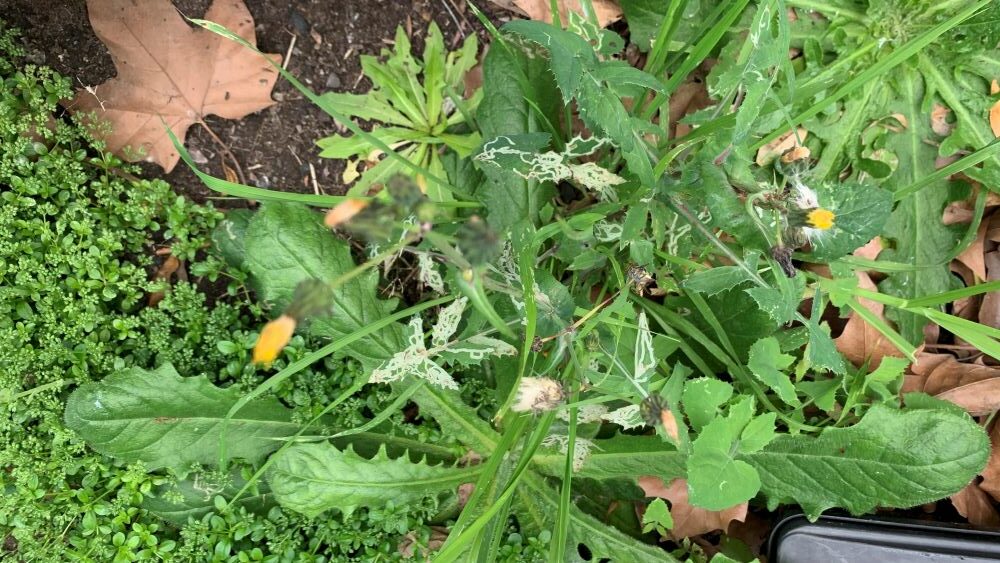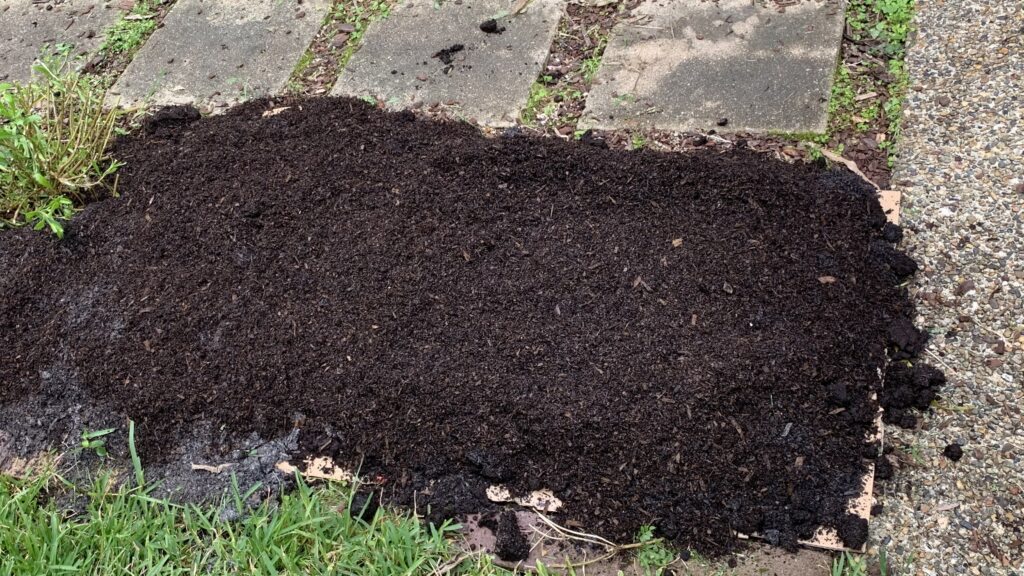Having a vegetable garden great, but if yours is starting to be inundated with weeds, it’s time to do something about it.
There are lots of ways to clear a vegetable garden full of weeds by using simple items such as vinegar, salt, cardboard, mulch, and newspaper. Smothering weeds is the best natural way to remove a large amount of weeds in your garden without using chemicals.

This article will explore 10 great way s to clear a vegetable garden full of weeds.
10 Ways to Clear a Vegetable Garden Full of Weeds
There are numerous all-natural ways to clear weeds out of your garden, including the following:
1. Black Plastic
You can buy a black plastic tarp in a nursery or home-improvement center to smother weeds. The idea behind it is to starve the weeds of oxygen and therefore kill them.
Just cover the areas with weeds, weigh the tarp down with bricks, rocks or pavers so it doesn’t blow away. Leave the tarp on the weeds for 2-6 weeks depending on the weeds.
Weeds with deep runners like couch grass will take up to 6 weeks to be killed by this method. Smaller, shallow rooted weeds will be killed in as little as 2 weeks.

2. Boiling Water
Boiling water poured over the weeds can essentially burn them and kill them. You just have to be careful not to pour the water over any plants that you are planning to keep as they can be damaged by this method.
Boiling water will usually turn the weeds yellow first, slowly killing them. You can then pull the weeds up to remove the roots once they’ve been killed by the boiling water.
This is a no-nonsense way to kill the weeds in your garden. And you don’t have to use fancy distilled water because even tap water will do.
3. Pull Weeds By Hand
You can also pull the weeds up by hand, and even though this is hard work, it does a great job of getting rid of your weeds. The one thing you’ll want to make sure of is to remove the entire plant and all of the roots.
With many types of weeds, if you leave just a small portion of the roots, the weeds might come back again quickly. You can also wet the plants first with water to make the task a little easier. Just bring a pail of water and pour a little over each set of weeds before pulling them.

4. Corn Gluten Meal
Corn gluten meal works great on weeds and won’t harm your vegetable plants. Corn gluten meal is high in protein, nitrogen and oils and can be sprinkled on the soil to control weeds.
It is sold in lawn and gardening stores rather than at your local grocery store. Corn gluten meal works well on annual weeds that have not sprouted yet. It needs to be sprayed on the soil to control weed growth before they come through.
5. Cover Cropping
Cover crops are a great way to control weed growth in your vegetable garden. Cover crops are grown specifically to cover the soil and block weed growth.
These are crops that you do not intend to harvest including buckwheat and millet in the warm seasons and crimson clover in the cold or cool seasons.
When you practice cover cropping, it protects your topsoil from erosion and even acts like a mulch when the vegetable plants are ready to start growing again. This method suppresses the development of weeds and can even improve your yield of vegetables in the end.
6. Dig and Hoe
This is the fastest way to clear a vegetable garden full of weeds. It is hard work because you’re digging around the weeds and then pulling them out of the ground by hand.
In addition to using a hoe, you can also use a farm fork or a spade. Turn the soil over and dig the weeds back in. The nutrients, including nitrogen in the weeds will break down to feed the soil.
Remove any weeds with runners by hand as they can resprout.
7. Newspaper, Cardboard and Mulch
Smothering weeds in a vegetable garden with thick carboard or newspaper and mulch is a great way to get rid of them and to feed your soil. Start by removing any deep rooted weeds and runners.
Then cover the annual weeds with a layer of cardboard, or at least 7 layers of newspaper. Make sure all of the soil and weeds are covered so that they can’t get any light.
Next, cover the newspaper and cardboard with a 3-6 inch layer of bark mulch. You can also use straw or hay. This will smother the weeds and break down over time.
This process also stops any other weeds that are in the process of sprouting from emerging from the soil. Mulch is healthy for the plants as it slowly breaks down to feed your new plants.

8. Salt Water
Salt water sprays can be used to kill weeds. Mix up around 3 tablespoons of salt with 2 cups of water in a spray bottle. Spray it directly on the weeds and avoid getting it on the soil.
Salt water chokes the weeds to death and therefore kills them. Once the weeds start to die back, pull them out and put them in the garbage. Avoid putting them in your compost as the salt can damage the mix and kill of the good bacteria.
9. Vinegar
Mix it half white vinegar with water to make an effective weeds spray. Simply put it in a spray bottle and spray your weeds daily for 2–3 days.
By that time, your weeds should be dead. Avoid spraying any healthy plants or vegetables that you want to keep. This is a good method for a vegetable garden that is not currently in use.
10. Weed Barrier
Synthetic weed barriers are also another good option when smothering weeds. Weed fabric can be used temporarily to smother weeds. Cover it with mulch and then remove it after 2-3 weeks.
This method works similarly to covering the ground with cardboard or paper. In this case you will remove the weed barrier once the weeds are dead. You can then dig the weeds through the soil to mix the nutrients through.
Conclusion
Weeds can destroy your vegetable garden in no time, so it’s good to know how to get rid of them. There are numerous methods you can use to do this, and the best part is that most of them are chemical-free and natural or organic.
I am an accredited practicing dietitian, experienced gardener and a dedicated cook. I love writing and sharing my experience so you can learn from my successes and mistakes.
